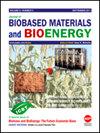Genome-Wide Identification of BrassinaZole Resistant (BZR) Gene Family in Brassica rapa ssp. pekinensis and Its Expression Pattern During Flowering Process
IF 0.5
4区 医学
引用次数: 0
Abstract
The BrassinaZole Resistant (BZR) gene family mediates the signal transduction of brassinolide, which is vital in regulating vegetative and reproductive growth of plants. In this research, a comprehensive analysis of all candidate BrBZR genes in Chinese cabbage (Brassica rapa ssp. pekinensis) was conducted using bioinformatics methods, including protein physicochemical properties, evolutionary relationship, gene structure, and conserved domains. Additionally, these candidate genes’ expression patterns during flowering development were analyzed utilizing transcriptome data, and key genes that regulate flowering of Chinese cabbage were screened. In the results, 14 BrBZR genes were identified, with coding sequence (CDS) lengths of 460–1162 bp, and encoding proteins of 152–386 amino acids. The majority of BrBZRs had a highly conserved motif 1 as well as numerous regulatory elements associated with hormone and abiotic stress responses. Transcriptome sequencing showed that 12 BrBZRs were expressed during the flowering development, among which BrBES1.1 and BrBES1.2 were highly expressed, with FPKM ranges of 61.78–99.91 and 43.71–76.69, respectively. Their expression was upregulated during vernalization and flower bud differentiation, suggesting that they may play a key role in regulating the flowering process of Chinese cabbage. Overall, our study provides comprehensive insights into the BrBZR gene family, and has important implications for the further elucidation of the mechanisms that regulate flower development in Chinese cabbage and potentially other related Brassica species.甘蓝型大白菜抗芸薹唑(BZR)基因家族的全基因组鉴定及其在开花过程中的表达模式
抗黄铜内酯(BrassinaZole Resistant,BZR)基因家族介导黄铜内酯的信号转导,而黄铜内酯对调节植物的无性和生殖生长至关重要。本研究采用生物信息学方法对大白菜(Brassica rapa ssp. pekinensis)中所有候选的BrBZR基因进行了全面分析,包括蛋白质理化性质、进化关系、基因结构和保守结构域。此外,还利用转录组数据分析了这些候选基因在开花发育过程中的表达模式,筛选出调控大白菜开花的关键基因。结果发现了14个BrBZR基因,其编码序列(CDS)长度为460-1162 bp,编码的蛋白质为152-386个氨基酸。大多数BrBZR具有高度保守的基序1以及许多与激素和非生物胁迫反应相关的调控元件。转录组测序显示,12个BrBZRs在开花发育期表达,其中BrBES1.1和BrBES1.2表达量较高,FPKM范围分别为61.78-99.91和43.71-76.69。它们在春化和花芽分化过程中表达上调,表明它们可能在调控大白菜开花过程中起着关键作用。总之,我们的研究提供了对 BrBZR 基因家族的全面认识,对进一步阐明大白菜及相关芸苔属植物花发育的调控机制具有重要意义。
本文章由计算机程序翻译,如有差异,请以英文原文为准。
求助全文
约1分钟内获得全文
求助全文

 求助内容:
求助内容: 应助结果提醒方式:
应助结果提醒方式:


